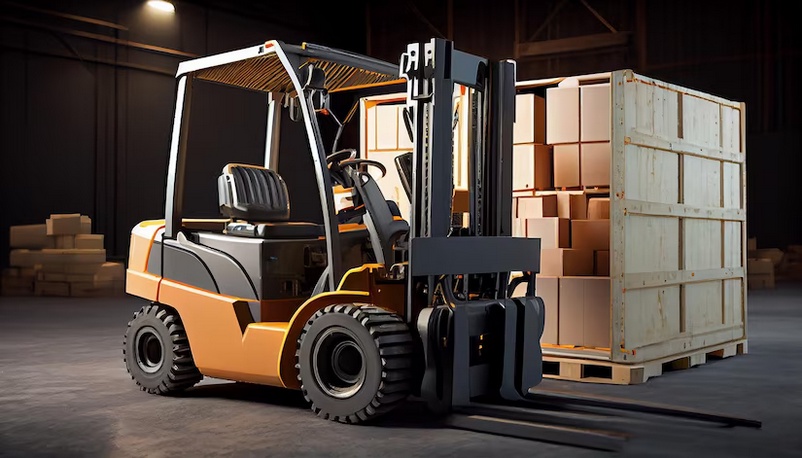Introduction
Drums are a common container used in various industries to store and transport liquids, powders, and other materials. However, handling these heavy and sometimes hazardous containers can be challenging without the right equipment. In the UK, the use of drum handling equipment is essential to ensure the safety of workers, efficient operations, and compliance with regulations. This ultimate guide provides a comprehensive overview of drum handling equipment in UK, including its types, applications, regulations, and safety considerations.
Types of Drum Handling Equipment
Drum handling equipment encompasses a wide range of devices designed to lift, move, tilt, and secure drums of different sizes and types. Some common types of drum handling equipment include:
-
Drum Lifters: Drum lifters are designed to lift drums vertically. They come in various forms, including drum grabs, drum clamps, and drum slings. These devices attach securely to the drum's rim or body and can be operated manually or using powered mechanisms.
-
Drum Trolleys and Dollies: Drum trolleys and dollies are wheeled platforms that allow easy transport of drums on flat surfaces. They are especially useful for short-distance movement within a facility.
-
Drum Stackers: Drum stackers are versatile equipment that combines lifting and stacking capabilities. They are often used to load and unload drums from pallets, shelves, or racks.
-
Drum Rotators: Drum rotators are designed to tilt or rotate drums for pouring or decanting liquids. They come in both manual and powered versions and are essential for precise and controlled pouring.
-
Forklift Attachments: Forklifts can be equipped with drum handling attachments to lift and transport drums. These attachments can include drum clamps or fork-mounted drum carriers.
-
Drum Racks and Stands: Drum racks and stands provide a secure and organized way to store and display drums. They come in various configurations to accommodate single or multiple drums.
Applications of Drum Handling Equipment
Drum handling equipment is crucial in a wide range of industries where drums are used for storage and transportation. Some common applications include:
-
Chemical Industry: Handling hazardous chemicals often involves the use of specialized drum handling equipment to ensure the safety of workers and prevent spills or leaks.
-
Manufacturing: Drum handling equipment is used in manufacturing processes to transport raw materials, store finished products, and facilitate efficient production workflows.
-
Pharmaceuticals and Food Processing: In these industries, precise handling of drums containing sensitive materials is essential to maintain product integrity and meet hygiene standards.
-
Waste Management: Drum handling equipment plays a vital role in waste disposal and recycling processes, allowing for the safe handling of drums containing various types of waste.
-
Construction: Drums are used in construction for storing and transporting materials like concrete, asphalt, and lubricants. Drum handling equipment ensures efficient construction operations.
Regulations and Compliance in the UK
In the UK, the handling of drums and other materials is subject to strict regulations and standards to ensure the safety of workers and protect the environment. Some key regulations and guidelines include:
-
Health and Safety at Work Act (1974): This legislation places a duty on employers to ensure the health, safety, and welfare of their employees, including safe handling and storage of materials, such as drums.
-
Control of Substances Hazardous to Health (COSHH) Regulations (2002): COSHH regulations require employers to assess the risks associated with hazardous substances, including those stored in drums, and implement control measures to prevent exposure.
-
Dangerous Substances and Explosive Atmospheres Regulations (DSEAR) (2002): DSEAR regulations apply to workplaces where there is a risk of fire, explosion, or the release of dangerous substances. Proper handling and storage of drums are critical to compliance.
-
Manual Handling Operations Regulations (1992): These regulations require employers to assess and reduce the risk of injury from manual handling activities, such as lifting and moving drums. Proper training and the use of drum handling equipment can help meet these requirements.
Safety Considerations
When using drum handling equipment in the UK, safety should be a top priority. Here are some essential safety considerations:
-
Training: Ensure that operators receive proper training in the safe use of drum handling equipment. They should be familiar with the equipment's controls, capacity limits, and safety features.
-
Inspections: Regularly inspect drum handling equipment for signs of wear, damage, or malfunction. Defective equipment should be taken out of service immediately and repaired or replaced.
-
Load Capacity: Never exceed the rated load capacity of drum handling equipment. Overloading can lead to equipment failure and accidents.
-
Secure Attachment: Always ensure that drum attachments are securely fastened to the drum before lifting or moving it. Loose attachments can result in spills or drops.
-
Environmental Considerations: Be aware of environmental factors when handling drums, especially when dealing with hazardous materials. Take precautions to prevent spills, leaks, or contamination.
-
Personal Protective Equipment (PPE): Provide appropriate PPE, such as gloves and safety glasses, to workers involved in drum handling tasks. This can help protect them from potential hazards.
Conclusion
Drum handling equipment is an integral part of various industries in the UK, where drums are commonly used for storage and transportation. Properly selected and maintained drum handling equipment ensures the safety of workers, enhances operational efficiency, and helps organizations comply with regulations. Understanding the types of equipment available, their applications, and the relevant safety considerations is essential for effective drum handling in the UK. By prioritizing safety and compliance, businesses can ensure smooth and secure drum handling operations, contributing to overall workplace safety and productivity.


No comments yet